The Art of Visual Storytelling: Exploring The Fundamentals of Graphic Design
In today’s visually-driven world, the art of storytelling has evolved beyond words alone. Graphic design has become an integral part of effective communication, helping brands convey their message in a visually appealing and compelling way. From eye-catching logos to eye-catching websites, the fundamentals of graphic design play a crucial role in creating a lasting impression on audiences.
In this article, we delve into the world of graphic design and explore the fundamentals that make it a powerful storytelling tool. From color theory to typography, we uncover the key elements that contribute to an impactful visual story. Whether you’re a seasoned designer or a business owner looking to enhance your brand’s visual identity, understanding these fundamentals will help you create designs that captivate and engage your audience.
Join us as we venture into the realm of graphic design and discover how to harness its immense potential. In this visually stimulating journey, we’ll unravel the secrets behind successful design and explore the infinite possibilities of visual storytelling. Get ready to unlock your creative potential and take your designs to new heights.
Importance of Graphic Design in Visual Storytelling
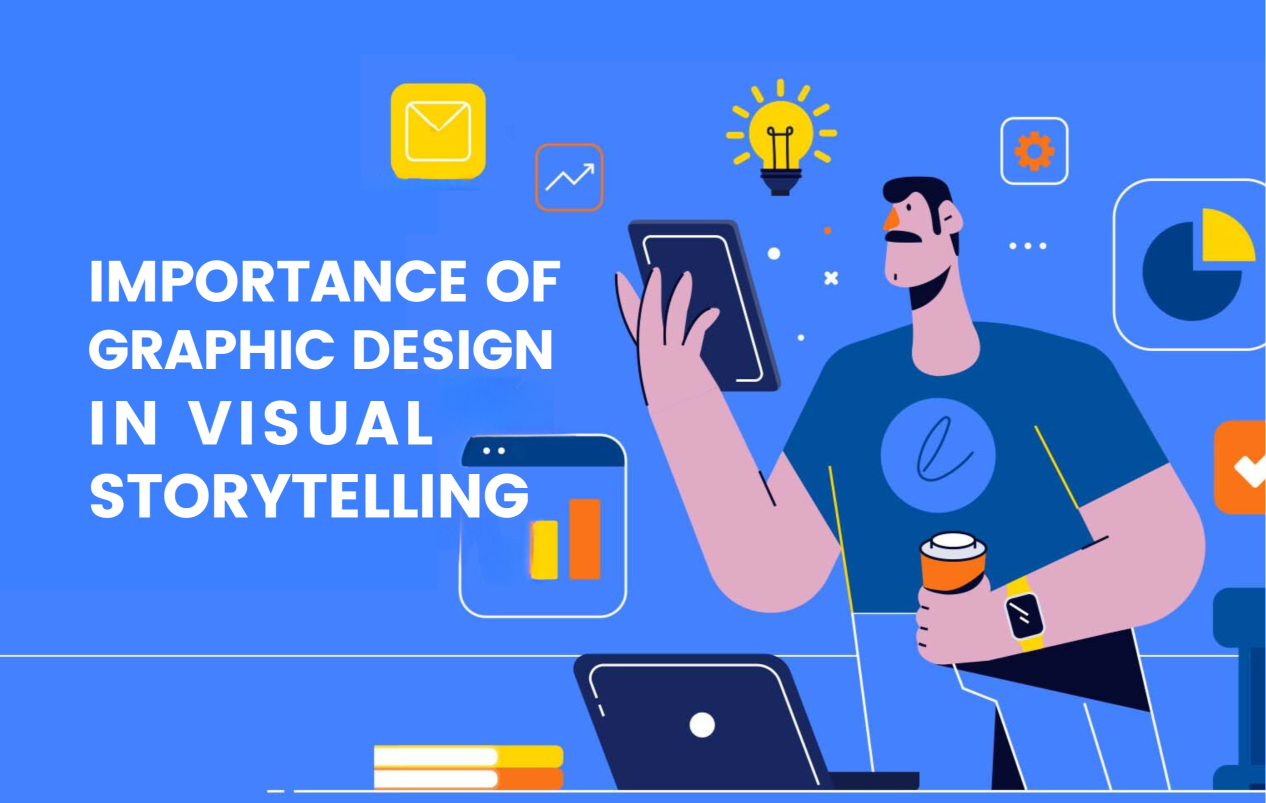
Graphic Design has revolutionized the way we communicate and tell stories in today’s visually-driven world. In a sea of information overload, it is crucial to capture the attention of our audience quickly and effectively. This is where graphic design comes in, acting as a powerful tool to convey messages in a visually appealing and compelling manner.
Through strategic use of design elements, such as color, typography, and imagery, graphic design helps create a cohesive visual narrative that enhances the overall storytelling experience. Whether it’s a logo, a website, or a social media post, well-designed visuals have the ability to evoke emotions, convey information, and leave a lasting impression on the viewer.
Design plays a vital role in shaping the perception of a brand and establishing its identity. It helps differentiate one brand from another and creates a recognizable visual language that resonates with the target audience. By understanding and applying the fundamentals of graphic design, businesses can effectively communicate their values, beliefs, and unique selling propositions.
As graphic design reshapes communication, mastering elements like color theory becomes vital. Explore more in-depth perspectives on the elements of mobile-friendly web design.
In a world where attention spans are shrinking, the use of strong visual storytelling through graphic design is more important than ever. It has the power to captivate, engage, and leave a lasting impression on audiences, making it an indispensable tool for businesses and individuals alike.
Elements of Graphic Design
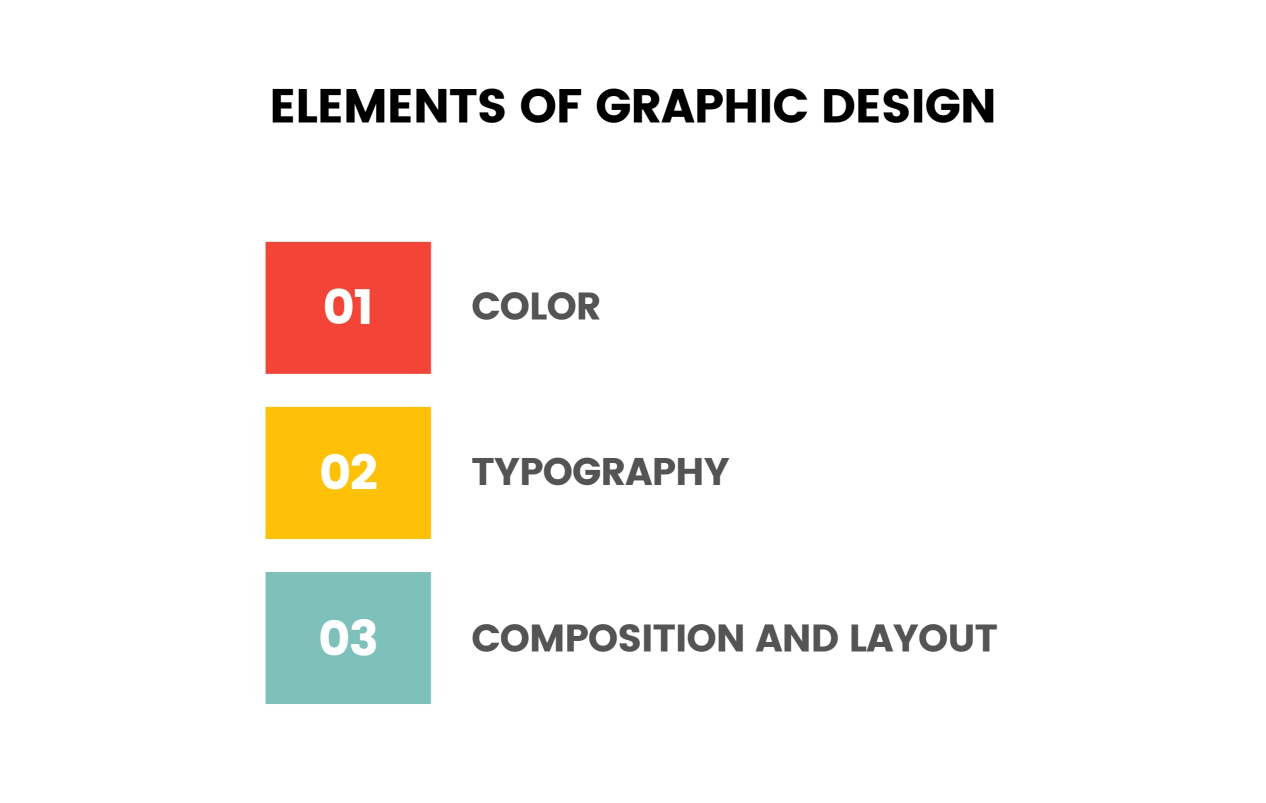
Graphic design is a multidisciplinary field that encompasses various elements working together harmoniously to create a visually compelling story. Understanding these elements is essential for any designer looking to create impactful designs.
1. Color
Color is one of the most powerful tools in graphic design, as it has the ability to evoke emotions, convey meaning, and create visual hierarchy. The choice of colors can greatly influence how a design is perceived and experienced. Warm colors like red and orange can create a sense of energy and excitement, while cool colors like blue and green can evoke calmness and tranquility. The use of contrasting colors can create visual interest and draw attention to specific elements within a design. Understanding color theory and its psychological effects is crucial for effective visual storytelling.
2. Typography
Typography refers to the art and technique of arranging typefaces in a visually appealing and readable way. It plays a significant role in conveying the tone, mood, and message of a design. The choice of fonts, sizes, spacing, and alignments can greatly impact the readability and overall aesthetic of a design. Different typefaces have their own personalities and can evoke different emotions. Serif fonts, for example, are often associated with tradition and elegance, while sans-serif fonts are seen as modern and clean. By carefully selecting and pairing typefaces, designers can enhance the storytelling aspect of their designs.
3. Composition and Layout
Composition and layout refer to the arrangement of visual elements within a design. It involves considering the balance, harmony, and visual flow of a design. Effective composition and layout can guide the viewer’s eye, highlight key elements, and create a sense of hierarchy. The use of grids, whitespace, and visual hierarchy principles like the rule of thirds can help create visually appealing and balanced designs. By understanding composition and layout principles, designers can create designs that are visually engaging and easy to navigate.
By mastering these fundamental elements of graphic design, designers can create visually compelling stories that effectively communicate their intended messages.
Color Theory and Its Impact on Visual Storytelling
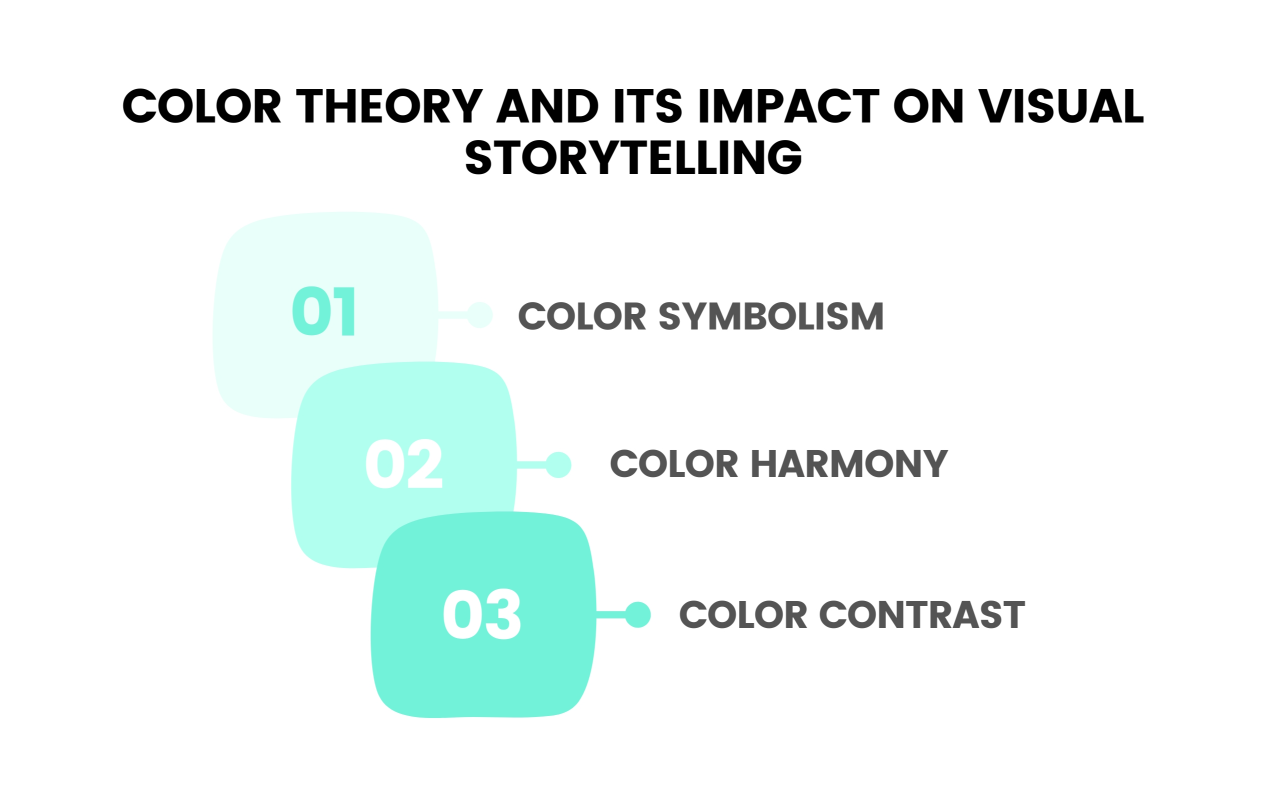
Color theory is a fundamental aspect of graphic design that plays a crucial role in visual storytelling. Colors have the power to evoke emotions, convey meaning, and create visual hierarchy within a design. Understanding color theory and its psychological effects on the viewer is essential for creating impactful visual narratives.
1. Color Symbolism
Different colors have cultural and psychological associations that can influence how a design is perceived. For example, red is often associated with passion, energy, and excitement, while blue is associated with tranquility, trust, and professionalism. By understanding the symbolic meanings of colors, designers can strategically use them to enhance the storytelling aspect of their designs. For example, a healthcare brand might use blue to convey a sense of trust and reliability, while a restaurant might use warm colors like red and orange to evoke appetite and excitement.
2. Color Harmony
Color harmony refers to the pleasing arrangement of colors within a design. By understanding color relationships, such as complementary, analogous, and triadic color schemes, designers can create visually harmonious designs that are aesthetically pleasing to the viewer’s eye. Color harmony helps create a sense of balance, unity, and coherence within a design, enhancing its overall visual impact.
3. Color Contrast
Color contrast refers to the difference in color values between different elements within a design. It can be used to create visual interest, draw attention to specific elements, and establish a hierarchy of importance. By using contrasting colors, designers can create focal points and guide the viewer’s eye through the design. For example, a call-to-action button in a contrasting color can attract attention and encourage user interaction. Understanding and effectively using color contrast can greatly enhance the storytelling aspect of a design.
By leveraging the principles of color theory, designers can create visually compelling designs that effectively communicate their intended messages and evoke the desired emotional responses from the audience.
Typography and Its Role in Conveying a Message

Typography is a powerful tool in graphic design that can greatly impact the way a message is conveyed and perceived. It involves the art and technique of arranging typefaces in a visually appealing and readable way. Typography plays a significant role in setting the tone, mood, and overall aesthetic of a design.
1. Font Selection
The choice of fonts can greatly influence the perception and tone of a design. Different typefaces have different personalities and can evoke different emotions. For example, a bold and condensed font might convey a sense of strength and urgency, while a handwritten script font might evoke a feeling of elegance and personal touch. When selecting fonts, designers should consider the target audience, the message they want to convey, and the overall design aesthetic.
2. Readability
Ensuring readability is essential in conveying a message effectively. The legibility of a design depends on factors such as font size, spacing, and line length. Designers should carefully consider these factors to ensure that the text is easily readable, even from a distance or at smaller sizes. The use of appropriate line spacing, paragraph breaks, and headings can also help improve readability and guide the viewer through the text.
3. Hierarchy
Typography can help establish a hierarchy of information within a design, guiding the viewer’s eye and highlighting key elements. By using different font sizes, weights, and styles, designers can create visual hierarchy and emphasize important information or calls to action. This helps ensure that the message is effectively communicated and understood by the viewer.
Typography is not just about selecting a font; it is about understanding how different typefaces work together to enhance the overall storytelling aspect of a design. By carefully considering font selection, readability, and hierarchy, designers can create designs that effectively convey their intended messages and engage the audience.
Composition and Layout in Graphic Design
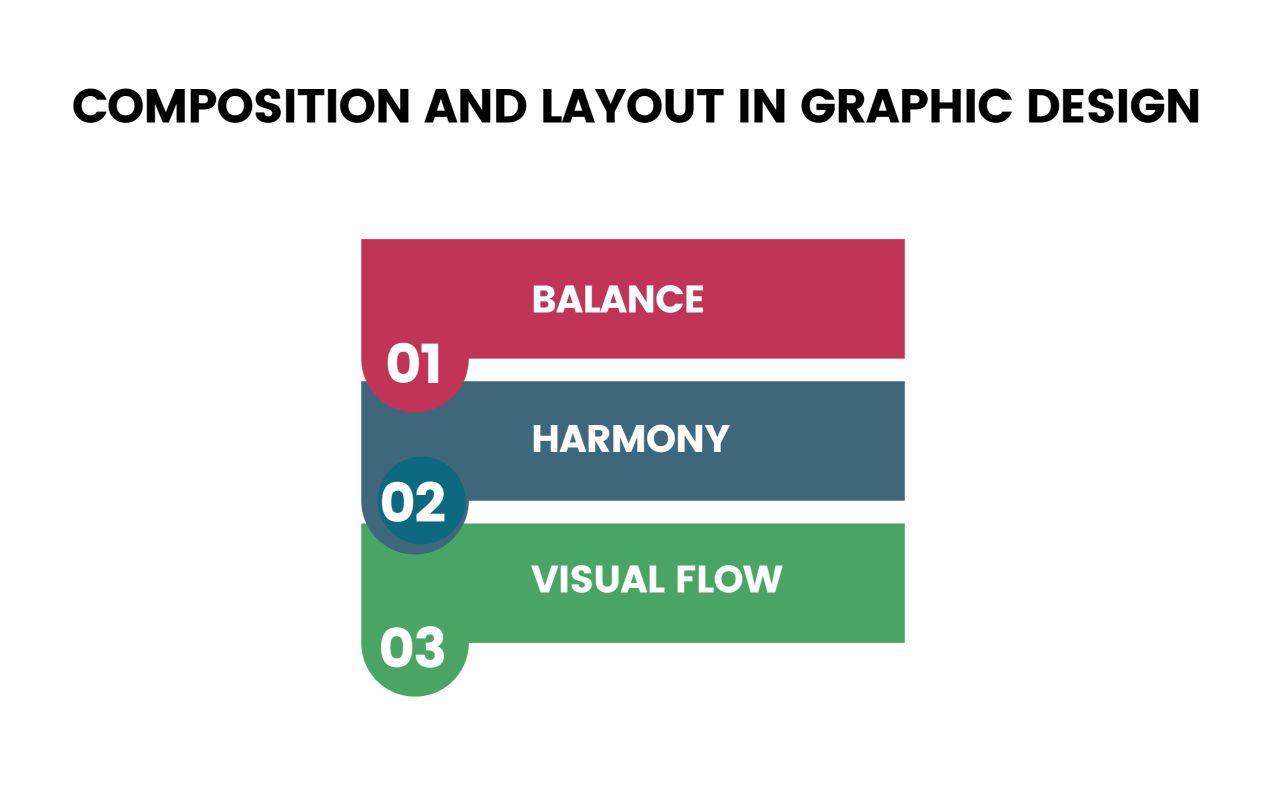
Composition and layout are fundamental aspects of graphic design that greatly impact the overall visual storytelling experience. They involve arranging visual elements within a design in a way that creates balance, harmony, and visual flow.
1. Balance
Balance refers to the distribution of visual weight within a design. It can be achieved through symmetrical or asymmetrical arrangements of elements. Symmetrical balance creates a sense of stability and formality, while asymmetrical balance creates a sense of dynamism and visual interest. By understanding and applying principles of balance, designers can create visually appealing and balanced designs that engage the viewer.
2. Harmony
Harmony refers to the pleasing arrangement and integration of different visual elements within a design. It involves considering factors such as color, typography, and spacing to create a cohesive and unified composition. By establishing visual harmony, designers can create designs that are visually appealing and coherent, enhancing the storytelling aspect of the design.
3. Visual Flow
Visual flow refers to the way the viewer’s eye moves through a design. It involves creating a clear path for the eye to follow, guiding the viewer through the design in a logical and engaging manner. By using techniques such as leading lines, visual hierarchy, and whitespace, designers can create designs that effectively guide the viewer’s attention and enhance the storytelling aspect.
By understanding and applying principles of composition and layout, designers can create visually engaging designs that effectively communicate their intended messages and captivate the viewer.
Using Imagery and Illustrations to Enhance Storytelling

Imagery and illustrations are powerful tools in graphic design that can greatly enhance the storytelling aspect of a design. They provide visual cues, evoke emotions, and help create a connection with the viewer.
1. Visual Cues
Imagery and illustrations can act as visual cues that convey meaning and enhance the storytelling aspect of a design. For example, a photograph of a happy family can evoke emotions of warmth and joy, while an illustration of gears can symbolize teamwork and innovation. By strategically selecting and incorporating imagery and illustrations, designers can create designs that effectively communicate their intended messages and engage the viewer.
2. Emotion and Connection
Imagery and illustrations have the power to evoke emotions and create a connection with the viewer. They can help establish a visual narrative that resonates with the viewer’s experiences and values. By using images that evoke emotions relevant to the message or story being told, designers can create designs that leave a lasting impression and establish a connection with the viewer.
3. Visual Storytelling
Imagery and illustrations can be used to visually narrate a story or convey complex information in a simplified and engaging way. They can help break down information into easily digestible chunks and guide the viewer through a narrative. By using visual storytelling techniques, designers can create designs that are visually compelling and memorable.
By incorporating imagery and illustrations into their designs, designers can enhance the storytelling aspect and create designs that resonate with the viewer on a deeper level.
Incorporating Branding into Visual Storytelling
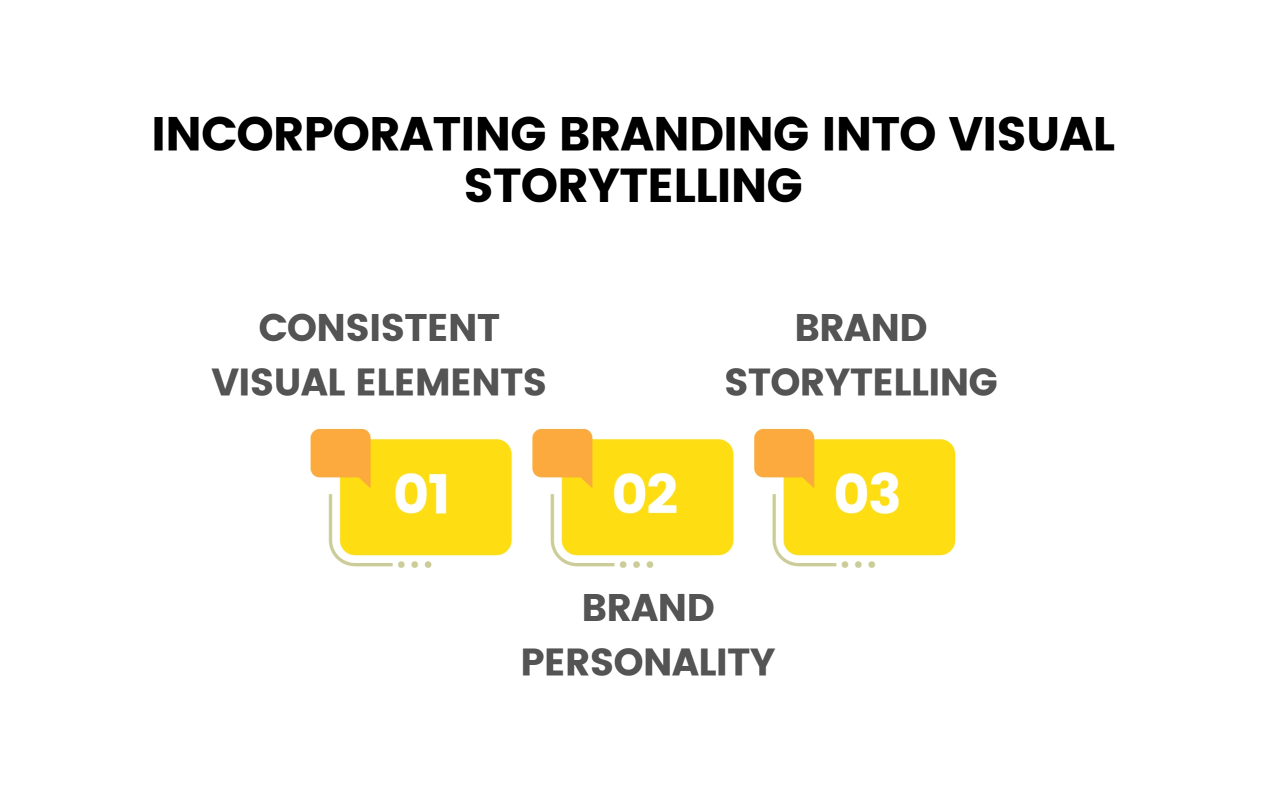
Branding is an essential aspect of graphic design that goes beyond just visual aesthetics. It involves creating a cohesive and consistent visual language that reflects the values, personality, and identity of a brand. By effectively incorporating branding into visual storytelling, designers can create designs that not only captivate the viewer but also reinforce the brand’s message and establish a strong brand identity.
1. Consistent Visual Elements
Consistency is key when it comes to branding. By using consistent visual elements such as colors, typography, and imagery across different design assets, designers can create a cohesive visual language that reinforces the brand’s identity. Consistency helps establish recognition and familiarity with the brand, enhancing the storytelling aspect of the design.
2. Brand Personality
Every brand has its own personality and unique selling propositions. By understanding the brand’s personality and values, designers can create designs that effectively communicate and reinforce these attributes. For example, a brand that prides itself on being innovative and cutting-edge might use bold and modern design elements, while a brand that focuses on sustainability and eco-friendliness might use earthy colors and natural imagery. By aligning the design with the brand’s personality, designers can create designs that tell a consistent and authentic story. For businesses, especially in distinct regions, understanding local branding strategies and tactics is crucial to creating an impactful brand identity.
3. Brand Storytelling
Brand storytelling involves using design to communicate the brand’s story, values, and mission. By incorporating brand messaging and narratives into the design, designers can create designs that emotionally connect with the viewer and establish a strong brand identity. This can be achieved through the use of imagery, typography, and composition that align with the brand’s story and values.
By effectively incorporating branding into visual storytelling, designers can create designs that not only captivate and engage the audience but also reinforce the brand’s message and establish a strong brand identity.
Tools and Software for Graphic Design
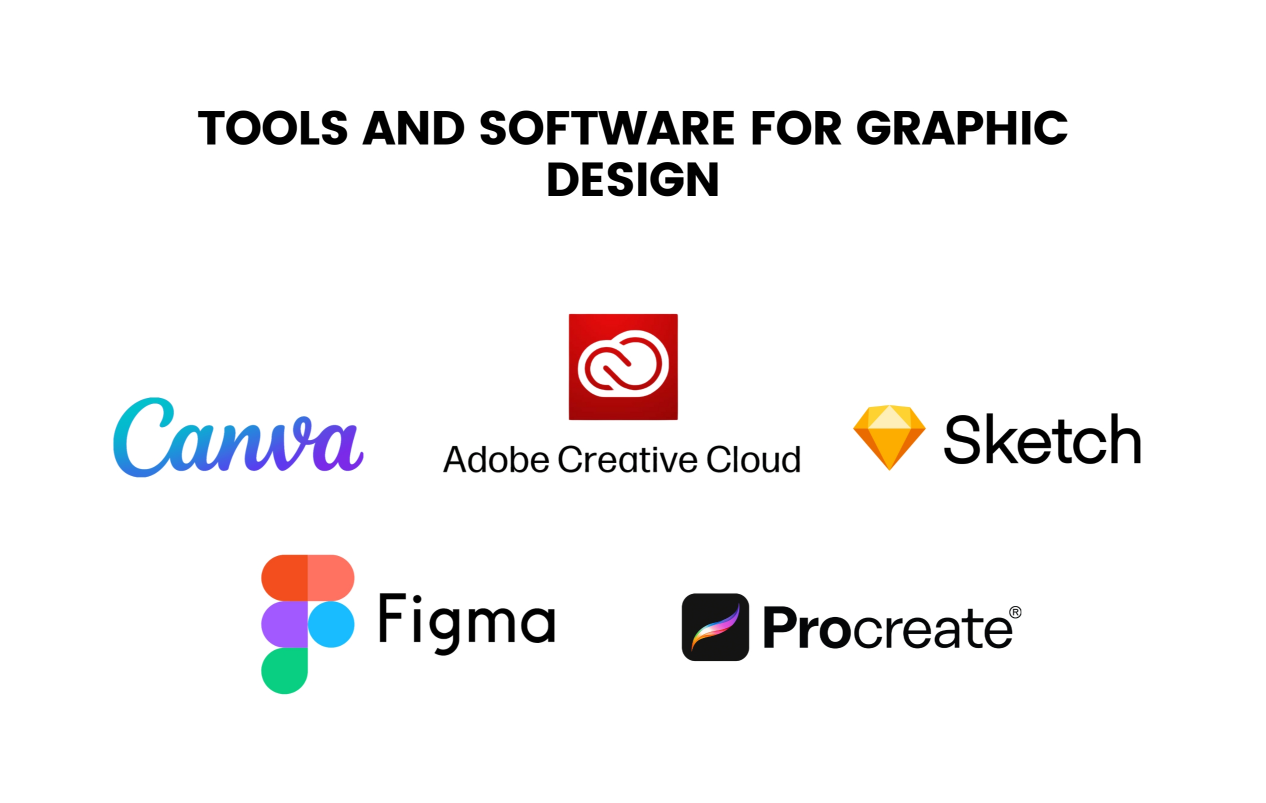
In the digital age, there are numerous tools and software available to aid designers in their graphic design journey. These tools provide a wide range of features and functionalities that can enhance the design process and help bring visual storytelling to life.
1. Adobe Creative Cloud
Adobe Creative Cloud is a suite of applications that includes popular software like Photoshop, Illustrator, and InDesign. These tools offer a wide range of features and functionalities for creating and editing graphics, illustrations, and layouts. They are widely used in the industry and provide a comprehensive set of tools for graphic designers.
2. Canva
Canva is a web-based design tool that provides a user-friendly interface and a wide range of templates and design elements. It is a great tool for beginners or non-designers looking to create professional-looking designs without the need for extensive design skills.
3. Sketch
Sketch is a vector-based design tool specifically designed for UI/UX design. It offers a range of features and plugins that make it a popular choice among web and app designers.
4. Figma
Figma is a collaborative design tool that allows multiple designers to work on a design project simultaneously. It offers a range of features for creating and prototyping designs, making it a great tool for collaborative design projects.
5. Procreate
Procreate is a digital drawing and painting app specifically designed for the iPad. It offers a wide range of brushes and tools that simulate traditional art mediums, making it a popular choice among digital artists and illustrators.
These are just a few examples of the tools and software available for graphic designers. The choice of tools depends on the specific needs and preferences of the designer. It is important to explore different tools and find the ones that best suit your workflow and design requirements.
Whether it’s for creating standout logos or appealing web interfaces, learn how our Logo and Graphic Design Services in Maryland can elevate your brand’s visual communication.
Conclusion: Harnessing The Power of Visual Storytelling in Your Designs
Graphic design is an art form that has the power to captivate, engage, and leave a lasting impression on audiences. By understanding and applying the fundamentals of graphic design, designers can create visually compelling designs that effectively communicate their intended messages.
From color theory to typography, composition to branding, each element of graphic design plays a crucial role in visual storytelling. By leveraging these elements strategically, designers can create designs that evoke emotions, convey meaning, and establish a strong brand identity.
Focusing on regional identity, branding for Maryland’s local businesses helps companies stand out in a crowded market.
Whether you are a seasoned designer or a business owner looking to enhance your brand’s visual identity, understanding these fundamentals will help you unlock the immense potential of graphic design in storytelling. By harnessing the power of visual storytelling in your designs, you can create captivating and engaging designs that resonate with your audience and leave a lasting impression. So, embrace the art of visual storytelling and take your designs to new heights. The possibilities are endless!
